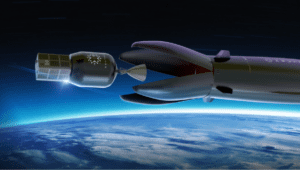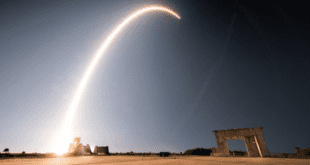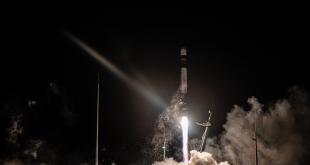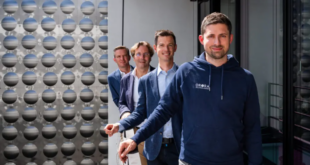
Edinburgh / Long Beach, California, 2 December 2021. – Rocket Lab revealed details about their next generation, 8-ton payload Neutron launch vehicle.
The rocket will provide reliable and cost-effective launch services for satellite mega-constellations, deep space missions and human spaceflight, said Rocket Lab.
Neutron is set to be the world’s first carbon composite large launch vehicle. The material is lightweight, strong and can withstand the heat and forces of frequent re-flight of the first stage. The rocket has a tapered shape with a wide base to provide a robust, stable base for landing and lift-off. The first stage will return to Earth for a propulsive landing at the launch site.
Neutron’s first stage will be powered by seven Archimedes rocket engines. The reusable liquid oxygen/methane gas generator cycle engines are capable of 1 MN thrust and 320 seconds of ISP (specific impulse). The second stage will comprise a single vacuum optimised Archimedes engine.
The new rocket’s ‘Hungry Hippo’ fairing forms part of the first stage structure. After releasing the second stage and payload, it will return to Earth with the first stage. The light second stage will be enveloped within this structure. The six-meter-long carbon composite second stage is going to be expendable.
Rocket Lab is currently in the process of selecting a launch site, a rocket production facility and an Archimedes engine test facility. The company expects to create around 250 new jobs with the Neutron project.
 SpaceWatch.Global An independent perspective on space
SpaceWatch.Global An independent perspective on space




